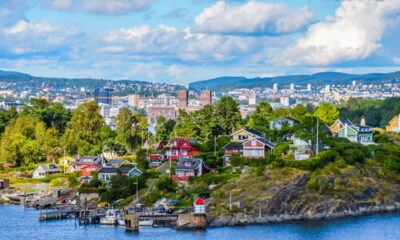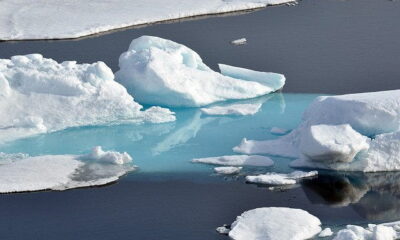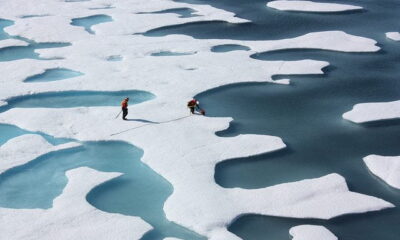

Environment
Satellite detects 50% increase in volume of Arctic sea ice
The Cryosat spacecraft has acquired data to suggest there was around 9,000 cubic km of sea ice in the Arctic region at the end of the melt season – a 50% increase in volume compared to the same period in 2012.
Despite this good news for a region that has seen vast losses of sea ice over the past few decades, scientists have warned that melting ice is still a major problem. Back in 1980, sea ice volume stood at 20,000 cubic km.
“Although the recovery of Arctic sea ice is certainly welcome news, it has to be considered against the backdrop of changes that have occurred over the last few decades”, Prof Andy Shepherd of University College London told the BBC.
“It’s estimated that there were around 20,000 cubic km of Arctic sea ice each October in the early 1980s, and so today’s minimum still ranks among the lowest of the past 30 years.”
A study published earlier this month suggested that there was a link between melting sea ice and extreme downpours in Europe. Meanwhile, scientists in the US believe that the Arctic could be completely ice-free in a matter of decades.
Mark Serreze, director of the National Snow and Ice Data Centre in the US, said, “The pattern we’ve seen so far is an overall downward trend in summer ice extent, punctured by ups and downs due to natural variability in weather patterns and ocean conditions.”
Further reading:
North Pole ‘drifting’ because of manmade climate change
Global warming has not paused since 1998, says study
Melting Arctic linked to European weather extremes
Arctic methane releases double previous estimates
‘Pause’ in global warming a result of gaps in data, finds new research


 Environment10 months ago
Environment10 months agoAre Polymer Banknotes: an Eco-Friendly Trend or a Groundswell?

 Environment12 months ago
Environment12 months agoEco-Friendly Home Improvements: Top 7 Upgrades for 2025

 Features9 months ago
Features9 months agoEco-Friendly Cryptocurrencies: Sustainable Investment Choices

 Features10 months ago
Features10 months agoEco-Friendly Crypto Traders Must Find the Right Exchange





























